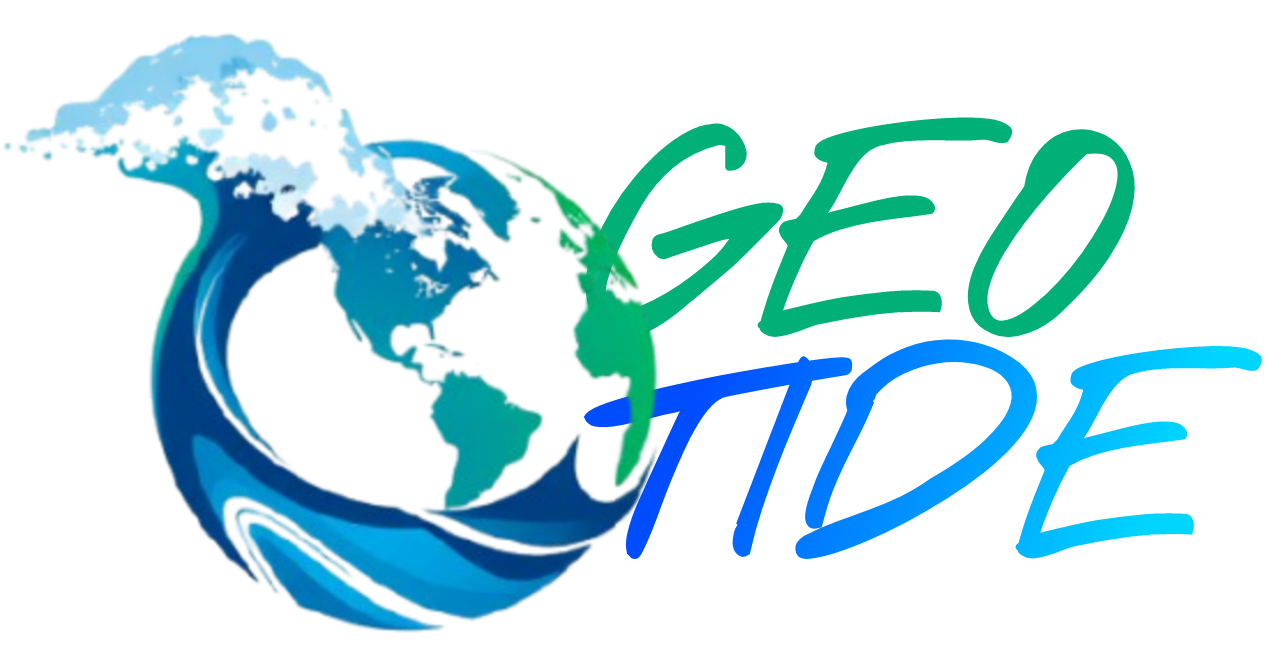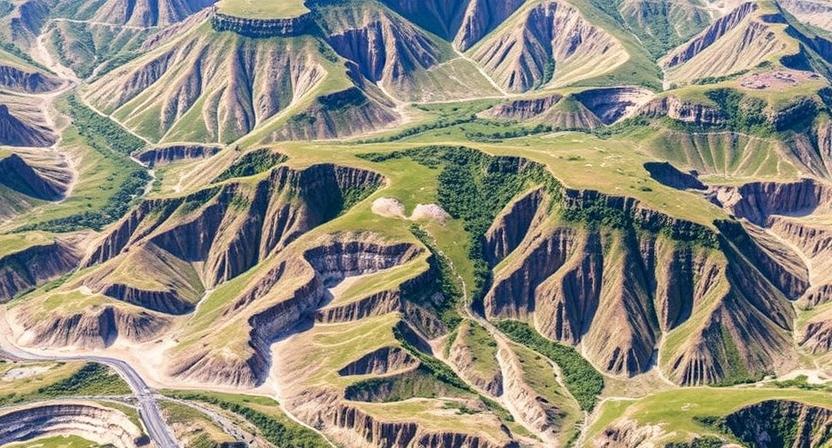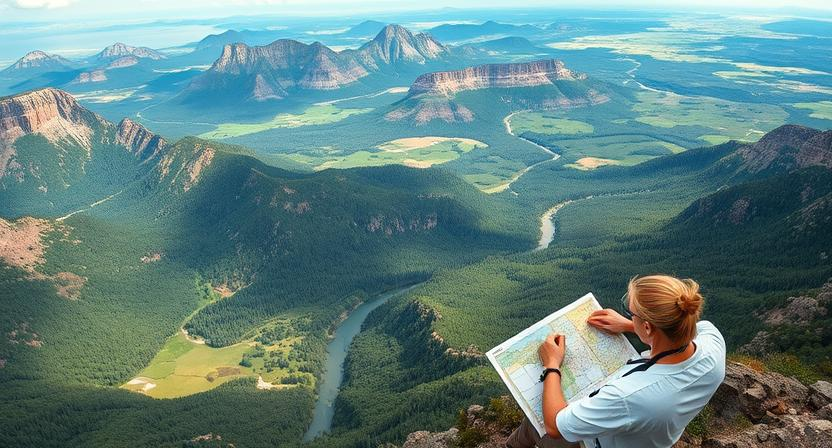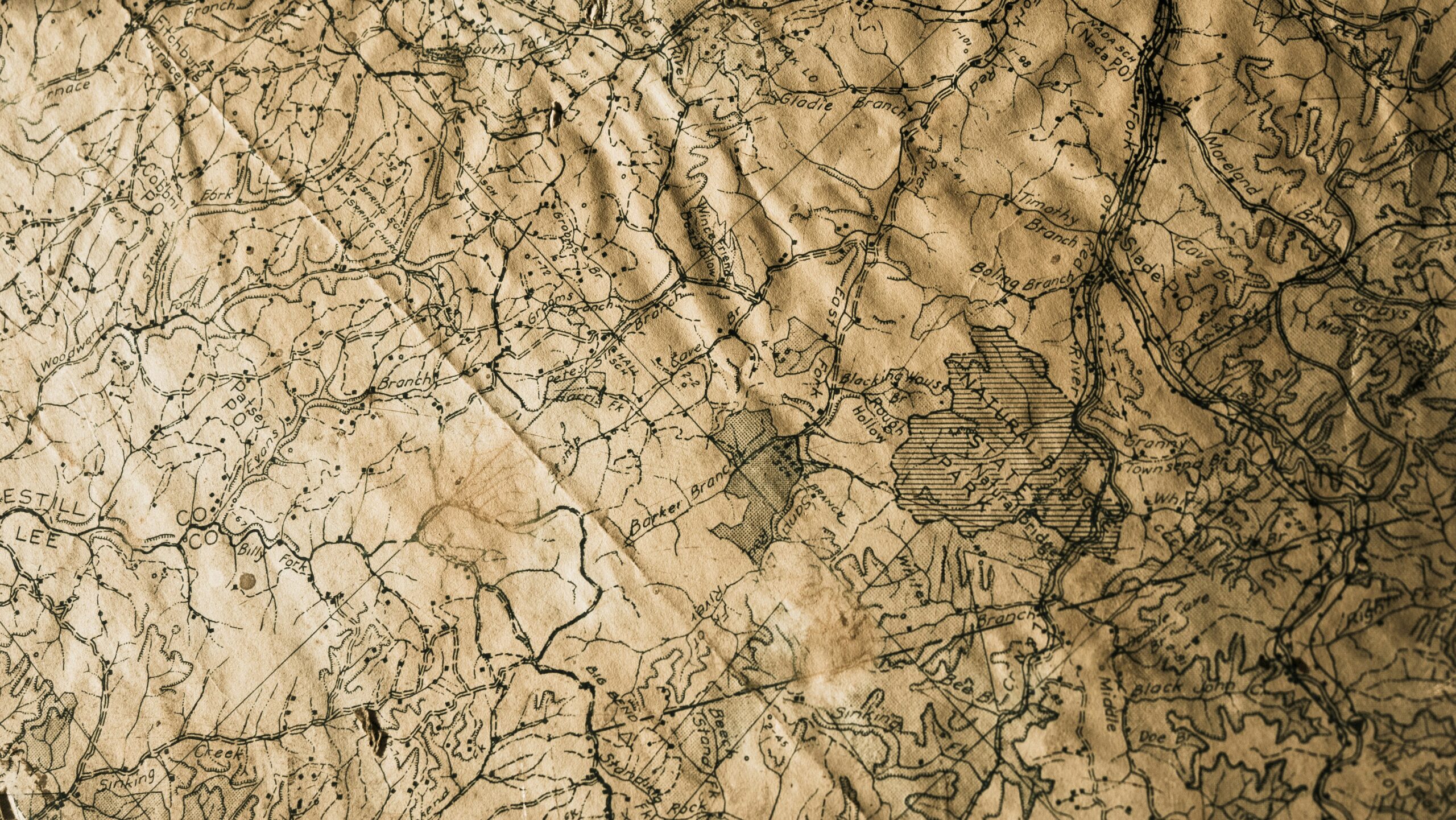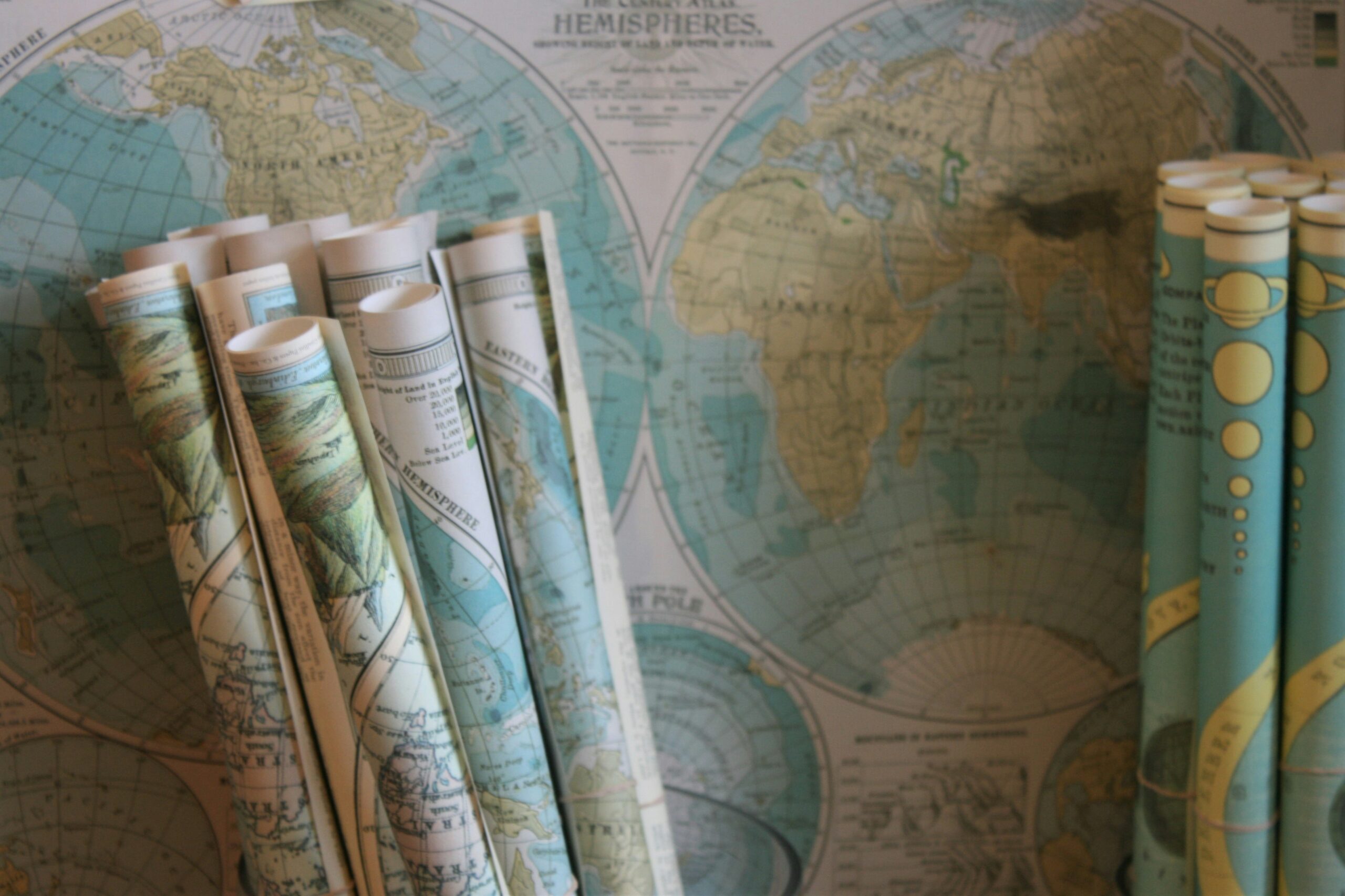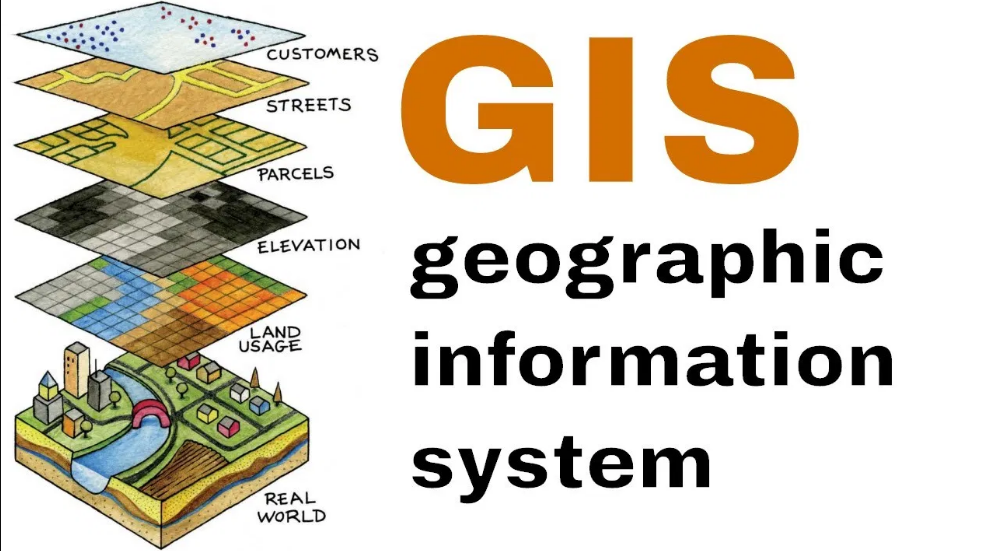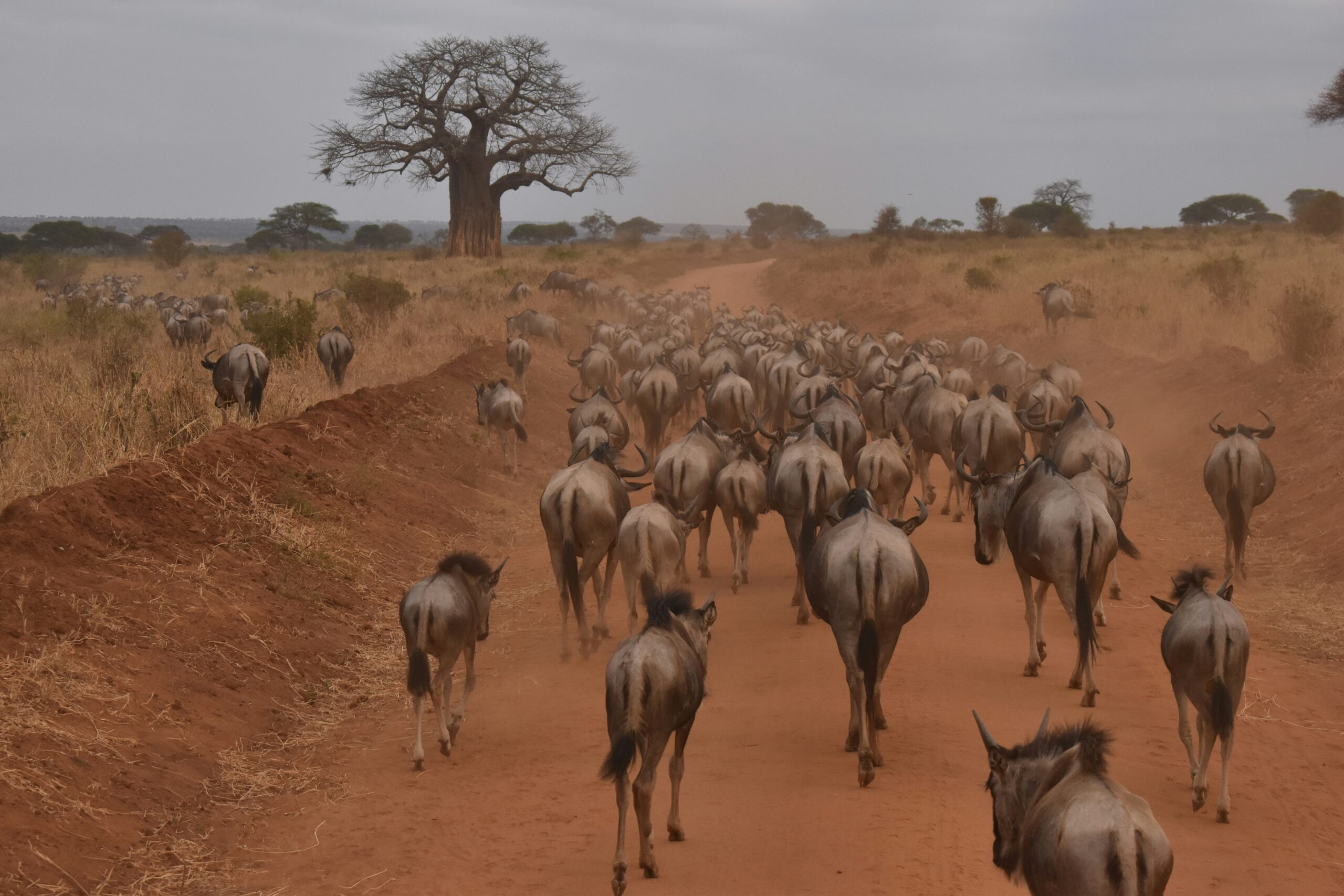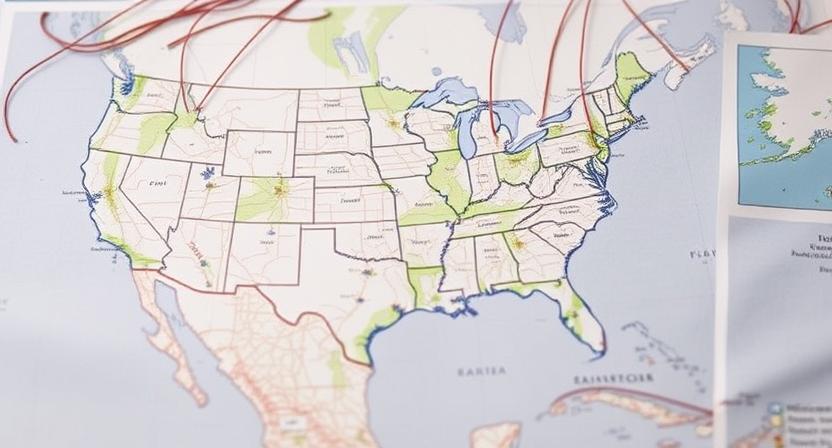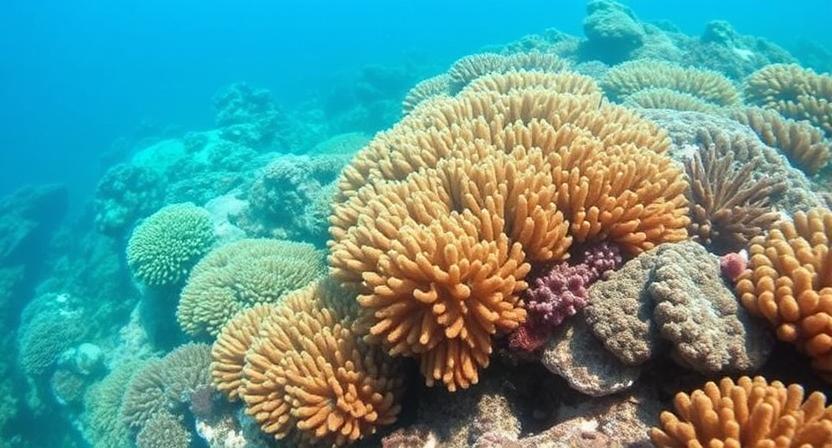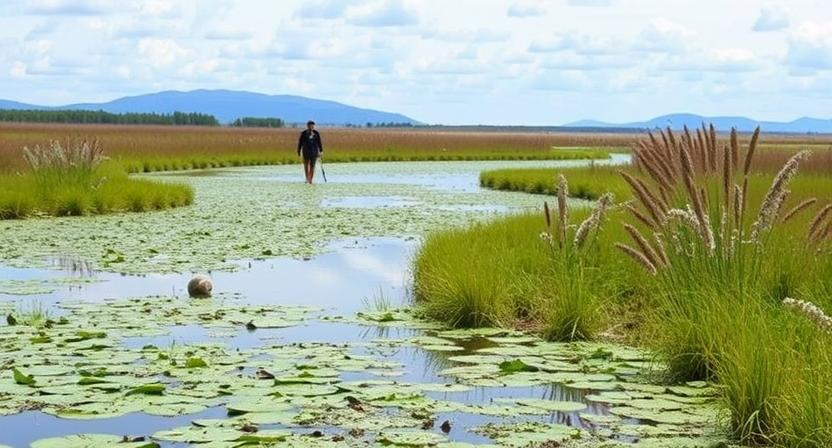
Why Wetlands are Critical Habitats for Wildlife

Wetlands play a crucial role in providing essential habitats for a wide variety of wildlife species. These diverse ecosystems offer food, shelter, and breeding grounds for countless animals, from birds to amphibians to mammals. The unique environmental conditions found in wetlands, such as fluctuating water levels and nutrient-rich soils, create a sustainable environment where different species can thrive and coexist.
Additionally, wetlands act as key stopover points for migratory species during their long journeys, providing much-needed rest and nourishment. The interconnectedness of wetlands with surrounding landscapes allows for the movement of wildlife and contributes to the overall health and resilience of ecosystems. Overall, wetlands are vital habitats that support rich biodiversity and play a vital role in maintaining the balance of nature.
• Wetlands provide essential habitats for a wide variety of wildlife species
• Diverse ecosystems offer food, shelter, and breeding grounds for animals
• Unique environmental conditions in wetlands create sustainable environments for different species to thrive
• Wetlands act as key stopover points for migratory species during their journeys
• Interconnectedness with surrounding landscapes allows movement of wildlife and contributes to ecosystem health
The Role of Wetlands in Providing Food and Shelter for Various Species
Wetlands play a vital role in providing food and shelter for a diverse range of species. The unique ecosystem found in wetlands supports a complex web of life, from small insects to large mammals. The nutrient-rich waters and vegetation in wetlands serve as a rich food source for many organisms, sustaining entire food chains within these habitats. Additionally, the dense vegetation, sprawling root systems, and varied topography in wetlands offer ideal shelter and breeding grounds for numerous species, providing protection from predators and harsh environmental conditions.
Many species rely on wetlands for their survival, with some even depending on these habitats exclusively for their food and shelter needs. Birds, amphibians, reptiles, and mammals are just a few examples of the wide array of wildlife that call wetlands their home. The intricate balance of plant and animal life in wetlands highlights the interconnectedness of species within these ecosystems, each playing a crucial role in maintaining the health and biodiversity of these habitats. Wetlands not only provide a safe haven for wildlife but also contribute to the overall resilience and sustainability of surrounding ecosystems.
• Wetlands support a complex web of life, from small insects to large mammals
• Nutrient-rich waters and vegetation in wetlands serve as a rich food source for many organisms
• Dense vegetation, sprawling root systems, and varied topography offer ideal shelter and breeding grounds for numerous species
• Birds, amphibians, reptiles, and mammals are just a few examples of the wide array of wildlife that call wetlands their home.
How Wetlands Help Regulate Water Quality and Quantity
Wetlands play a crucial role in regulating water quality and quantity in various ecosystems. One way they do this is by acting as natural filters, trapping sediments, nutrients, and pollutants that would otherwise degrade water quality. Wetlands also help to recharge groundwater supplies by absorbing excess water during periods of heavy rainfall, thus reducing the risk of flooding and maintaining stable water levels in surrounding areas.
Additionally, wetlands contribute to the natural process of water purification by slowing down the flow of water, allowing contaminants to settle out before reaching larger bodies of water. This helps to improve water quality by reducing the levels of harmful substances such as nitrogen and phosphorus. By enhancing water quality and quantity regulation, wetlands not only benefit the ecosystem but also provide essential services for human populations, such as clean drinking water and flood control.
• Wetlands act as natural filters, trapping sediments, nutrients, and pollutants
• They help recharge groundwater supplies by absorbing excess water during heavy rainfall
• Wetlands contribute to the natural process of water purification by slowing down water flow
• This helps reduce harmful substances like nitrogen and phosphorus in water bodies
• Wetlands provide essential services for human populations such as clean drinking water and flood control.
The Importance of Wetlands in Mitigating Climate Change
Wetlands play a crucial role in mitigating climate change through their ability to store carbon. As plants decompose in wetland environments, organic matter accumulates and becomes trapped in the soil, effectively sequestering carbon and preventing it from being released back into the atmosphere. This process helps to offset greenhouse gas emissions and contributes to the global fight against climate change.
Additionally, wetlands act as buffers against extreme weather events caused by climate change, such as flooding and storm surges. Their ability to absorb excess water and slow its movement helps to reduce the impact of these events on surrounding communities. By maintaining wetlands and protecting them from further destruction, we can harness their natural ability to mitigate climate change and adapt to its effects.
• Wetlands store carbon through decomposition of plants
• Organic matter accumulates and is trapped in the soil, sequestering carbon
• Helps offset greenhouse gas emissions and fight against climate change
• Wetlands act as buffers against extreme weather events like flooding and storm surges
• Absorb excess water and slow its movement to reduce impact on communities
• Protecting wetlands from destruction allows them to continue mitigating climate change
Wetlands as Breeding Grounds for Migratory Birds
Wetlands serve as crucial breeding grounds for a multitude of migratory bird species. These expansive, waterlogged regions provide a safe haven for birds to nest, rear their young, and rest during long journeys. The diverse habitats found within wetlands offer a rich abundance of resources such as food, shelter, and protection from predators, making them ideal environments for the breeding and survival of migratory birds.
The seasonal flooding and fluctuating water levels in wetlands create a dynamic ecosystem that attracts a wide variety of bird species. From waterfowl like ducks and geese to shorebirds such as sandpipers and plovers, migratory birds rely on wetlands for breeding and raising their offspring. The interconnectedness of wetlands with surrounding habitats like marshes, ponds, and mudflats further enhances their appeal to migratory birds seeking suitable breeding grounds to ensure the continuation of their species.
• Wetlands provide a safe haven for birds to nest and rear their young
• Diverse habitats within wetlands offer abundant resources like food and shelter
• Seasonal flooding and fluctuating water levels attract a wide variety of bird species
• Interconnectedness with surrounding habitats enhances appeal to migratory birds
How Wetlands Support a Diverse Array of Plant Species

Wetlands are key ecosystems that support a rich variety of plant species. These diverse plant communities play a crucial role in the health and functioning of wetlands, providing essential habitats for numerous wildlife species. Wetlands support a wide range of plant species, from emergent plants like cattails and bulrushes that grow along the water’s edge to submerged vegetation like pondweeds and water lilies that thrive beneath the surface.
The unique hydrological conditions found in wetlands, characterized by periods of both inundation and drying, create specialized niches that support a diverse array of plant life. Some wetland plants have adapted to thrive in saturated soils, while others can withstand periodic flooding or drought. Additionally, the interconnected nature of wetland habitats allows for the establishment of plant communities that provide food and shelter for a variety of organisms, contributing to the overall biodiversity of these vital ecosystems.
• Wetlands support a rich variety of plant species
• Diverse plant communities play a crucial role in wetland health
• Emergent plants like cattails and bulrushes grow along the water’s edge
• Submerged vegetation like pondweeds and water lilies thrive beneath the surface
The specialized hydrological conditions found in wetlands create unique niches for plant life to flourish. Some plants have evolved to thrive in saturated soils, while others can endure periods of flooding or drought. The interconnected nature of wetland habitats allows for the establishment of complex plant communities that provide food and shelter for a wide range of organisms, contributing to the overall biodiversity of these important ecosystems.
Overall, wetlands serve as vital habitats for numerous plant species, supporting their growth and reproduction while also providing essential resources for wildlife. By preserving and protecting these diverse ecosystems, we can ensure the continued existence of a rich array of plant species and maintain the delicate balance of our natural world.
The Threats Facing Wetlands and Their Impact on Biodiversity
Wetlands are facing a myriad of threats that are putting their delicate ecosystems at risk. One of the main challenges comes from human activities such as urban development, agriculture, and infrastructure projects that encroach upon wetland areas, leading to habitat destruction and fragmentation. Pollution from industrial runoff, agricultural pesticides, and untreated sewage also poses a significant threat to wetlands, disrupting their natural balance and impacting the biodiversity they support.
Additionally, climate change is exacerbating the vulnerability of wetlands by altering precipitation patterns, leading to more frequent and severe droughts or floods. These extreme weather events can destabilize wetland ecosystems, making them less resilient to change and more susceptible to further degradation. Invasive species are another threat, outcompeting native plant and animal species for resources and disrupting the intricate web of interactions that sustain wetland biodiversity.
• Urban development, agriculture, and infrastructure projects encroach upon wetland areas
• Pollution from industrial runoff, agricultural pesticides, and untreated sewage disrupt natural balance
• Climate change alters precipitation patterns leading to more frequent droughts or floods
• Extreme weather events destabilize wetland ecosystems making them less resilient
• Invasive species outcompete native plant and animal species for resources
Conservation Efforts to Protect Wetlands and Biodiversity
Numerous conservation efforts are underway globally to safeguard wetlands and preserve biodiversity. These initiatives involve the establishment of protected areas, the implementation of sustainable land management practices, and the promotion of community engagement in wetland conservation. By collaborating with local communities, governments, and non-profit organizations, these efforts aim to enhance the resilience of wetland ecosystems and protect the diverse array of species that rely on them for survival.
Educational programs and outreach campaigns play a crucial role in raising awareness about the value of wetlands and the importance of biodiversity conservation. By educating the public about the significance of wetlands in supporting a healthy environment and sustaining diverse ecosystems, these initiatives seek to inspire collective action towards the protection and restoration of these vital habitats. Through increased awareness and advocacy, conservation efforts can gain momentum and drive positive change for the long-term health and sustainability of wetlands and the biodiversity they harbor.
• Protected areas are established to safeguard wetlands
• Sustainable land management practices are implemented to preserve biodiversity
• Community engagement is promoted for wetland conservation efforts
• Educational programs raise awareness about the value of wetlands
• Outreach campaigns inspire collective action towards protection and restoration efforts
• Increased awareness and advocacy drive positive change for the long-term health of wetlands
The Economic Value of Wetlands in Supporting Biodiversity
Wetlands play a crucial role in supporting biodiversity, which in turn holds significant economic value. The diverse array of plant and animal species found in wetlands contributes to ecosystem services that are essential for human well-being. Wetlands help in regulating water quality, reducing soil erosion, and providing natural flood control, all of which have tangible economic benefits.
Furthermore, wetlands support fisheries by serving as nurseries for fish and other aquatic species, which are vital for commercial and recreational fishing industries. The presence of wetlands enhances the productivity of surrounding ecosystems, ultimately leading to increased economic gains. Protecting and conserving wetlands not only safeguard biodiversity but also secure the economic benefits derived from these invaluable habitats.
• Wetlands play a crucial role in supporting biodiversity
• Diverse plant and animal species contribute to ecosystem services
• Regulating water quality, reducing soil erosion, and providing flood control have economic benefits
• Wetlands serve as nurseries for fish, supporting fisheries
• Enhance productivity of surrounding ecosystems leading to increased economic gains
• Protecting wetlands safeguards biodiversity and secures economic benefits
The Cultural Significance of Wetlands to Indigenous Communities
Wetlands hold a deep cultural significance for many Indigenous communities around the world. These ecosystems are often seen as sacred places, embodying a connection to the land, water, and ancestral spirits. For Indigenous peoples, wetlands are more than just physical spaces; they are repositories of traditional knowledge, customs, and spiritual practices that have been passed down through generations.
Indigenous communities rely on wetlands for sustenance, medicine, and spiritual renewal. These ecosystems provide not only physical resources, such as fish and plants for food and medicine, but also a sense of identity and connection to the natural world. Wetlands are woven into the cultural tapestry of Indigenous societies, shaping their worldviews, beliefs, and social structures.
• Wetlands are considered sacred places by many Indigenous communities
• They embody a connection to the land, water, and ancestral spirits
• Wetlands serve as repositories of traditional knowledge, customs, and spiritual practices passed down through generations
• Indigenous peoples rely on wetlands for sustenance, medicine, and spiritual renewal
• These ecosystems provide physical resources like fish and plants for food and medicine
• Wetlands also offer a sense of identity and connection to the natural world for Indigenous communities
• They shape the cultural tapestry of Indigenous societies, influencing their worldviews, beliefs, and social structures.
Wetlands as Natural Filters for Contaminants

Wetlands serve as natural filters for contaminants by trapping sediments, nutrients, and pollutants that flow into their waters. As water moves through wetlands, vegetation and soil help to break down harmful substances and improve water quality. This filtration process is crucial in preventing pollution from entering larger water bodies, thus safeguarding aquatic ecosystems and the species that depend on them.
The ability of wetlands to purify water is not only beneficial for wildlife but also for human communities that rely on these ecosystems for clean water sources. By absorbing and transforming pollutants, wetlands play a vital role in maintaining water quality and reducing the risks associated with contamination. Recognizing the value of wetlands as natural filters can guide conservation efforts to protect these habitats and promote their role in sustaining both biodiversity and human well-being.
• Wetlands trap sediments, nutrients, and pollutants
• Vegetation and soil help break down harmful substances
• Improves water quality by filtering contaminants
• Prevents pollution from entering larger water bodies
• Safeguards aquatic ecosystems and dependent species
• Benefits both wildlife and human communities for clean water sources
• Absorbs and transforms pollutants to maintain water quality
• Reduces risks associated with contamination
• Conservation efforts can protect wetlands as natural filters
The Link Between Wetlands, Biodiversity, and Human Health
Wetlands play a crucial role in supporting biodiversity, which in turn has significant effects on human health. The diverse array of plant and animal species found in wetlands helps to maintain ecological balance and provide important ecosystem services that directly benefit human well-being. From filtering pollutants and regulating water quality to providing food and medicinal resources, the health of wetland ecosystems is closely intertwined with the health of human populations.
Furthermore, wetlands act as natural buffers against climate change impacts, such as flooding and erosion, which can have direct implications for human health and safety. By preserving wetlands and the biodiversity they support, we not only protect essential habitats for plants and animals but also safeguard vital resources that contribute to human health and resilience. Recognizing the intricate link between wetlands, biodiversity, and human health is essential for promoting conservation efforts that benefit both ecosystems and human societies.
• Wetlands support biodiversity, which directly impacts human health
• Plant and animal species in wetlands help maintain ecological balance
• Wetlands provide important ecosystem services that benefit human well-being
• Filtering pollutants and regulating water quality are among the services provided by wetlands
• Wetland ecosystems are closely intertwined with the health of human populations
Moreover, wetlands play a crucial role in mitigating the effects of climate change on human health. As natural buffers against flooding and erosion, wetlands help protect communities from environmental disasters that can have devastating consequences for public health. Preserving these vital ecosystems is not only essential for maintaining biodiversity but also for ensuring the resilience of human societies in the face of increasing climate-related challenges.
• Wetlands act as natural buffers against climate change impacts like flooding and erosion
• Preserving wetlands helps protect communities from environmental disasters
• Maintaining biodiversity in wetland ecosystems is crucial for human health resilience
The Role of Wetlands in Carbon Sequestration
Wetlands play a crucial role in carbon sequestration, acting as natural carbon sinks that help mitigate the increasing levels of carbon dioxide in the atmosphere. This process involves the capture and storage of carbon in wetland vegetation and soil, effectively removing carbon from the atmosphere and helping to combat climate change. Furthermore, the decomposition of organic matter in wetlands results in the formation of peat, which can store significant amounts of carbon over long periods.
In addition to storing carbon, wetlands also contribute to the reduction of greenhouse gas emissions by preventing the release of stored carbon through their anaerobic conditions. This unique feature allows wetlands to act as a buffer against the release of carbon dioxide and methane, two potent greenhouse gases. By maintaining the integrity of wetlands and their carbon sequestration capacity, we can enhance their role in mitigating climate change and preserving biodiversity.
• Wetlands act as natural carbon sinks, capturing and storing carbon in vegetation and soil
• Decomposition of organic matter in wetlands leads to the formation of peat, which stores significant amounts of carbon
• Wetlands help reduce greenhouse gas emissions by preventing the release of stored carbon through anaerobic conditions
• Maintaining wetland integrity enhances their role in mitigating climate change and preserving biodiversity
Wetlands as Crucial Habitats for Endangered Species
Wetlands serve as crucial habitats for endangered species due to their unique characteristics that support various forms of life. These ecosystems provide shelter, food, and breeding grounds for species that are at risk of extinction. The diverse array of plants and animals found in wetlands create a rich and interconnected web of life that is essential for the survival of endangered species.
The complex structure of wetlands, including the presence of water bodies, vegetation, and varying degrees of moisture, offers a diverse range of habitats that cater to the specific needs of endangered species. These environments provide a safe haven for vulnerable organisms, offering protection from predators and access to essential resources. By preserving and restoring wetlands, we can help safeguard the future of endangered species and promote biodiversity conservation on a global scale.
• Wetlands serve as crucial habitats for endangered species
• Unique characteristics support various forms of life
• Provide shelter, food, and breeding grounds for at-risk species
• Diverse array of plants and animals create a rich web of life that is essential for survival
The complex structure of wetlands plays a vital role in supporting endangered species. The presence of water bodies, vegetation, and varying degrees of moisture offers a diverse range of habitats that cater to the specific needs of vulnerable organisms. These environments provide a safe haven for endangered species, offering protection from predators and access to essential resources. By preserving and restoring wetlands, we can help ensure the future existence of these at-risk species while promoting biodiversity conservation on a global scale.
Overall, wetlands are invaluable ecosystems that play a critical role in supporting endangered species by providing them with necessary resources and protection. Preserving these habitats is essential for ensuring the survival and well-being of vulnerable organisms around the world. It is crucial that we continue to prioritize the conservation efforts aimed at protecting wetlands and their inhabitants to secure a sustainable future for all living beings sharing our planet.
The Interconnectedness of Wetlands and Surrounding Ecosystems
Wetlands play a crucial role in connecting with the surrounding ecosystems, forming a complex web of interactions and dependencies. The water, nutrients, and diverse habitats found within wetlands not only support a myriad of plant and animal species within their boundaries but also influence the health and functioning of adjacent ecosystems. The flow of water, movement of species, and exchange of organic matter between wetlands and surrounding areas contribute to the overall environmental balance and resilience of the entire landscape.
The intricate relationships between wetlands and surrounding ecosystems highlight the importance of conserving and protecting these vital habitats. Any disturbances or alterations to wetlands can have far-reaching consequences on the health and biodiversity of not only the wetland itself but also the interconnected ecosystems. Recognizing and understanding the interconnectedness of wetlands with surrounding areas is essential for effective conservation and management practices to ensure the long-term health and sustainability of these valuable ecosystems.
• Wetlands serve as natural filters, purifying water that flows into surrounding rivers and streams
• They provide critical habitats for a wide range of plant and animal species, many of which are unique to wetland environments
• Wetlands act as sponges during periods of heavy rainfall, helping to prevent flooding in nearby areas
• The vegetation in wetlands helps to stabilize soil and prevent erosion, benefiting the health of surrounding ecosystems
How Wetlands Contribute to Ecosystem Resilience

Wetlands uphold ecosystem resilience by serving as natural buffers against environmental disturbances. Their ability to absorb and store excess water during storms helps prevent flooding in surrounding areas, mitigating the impact on terrestrial habitats. Additionally, wetlands act as sponges, gradually releasing stored water during drier periods, contributing to water availability for ecosystems and human communities.
Moreover, wetlands play a crucial role in regulating nutrient cycles within ecosystems, enhancing their overall stability and health. They help filter and recycle organic matter and pollutants, preventing the accumulation of harmful substances in water bodies. By maintaining water quality and purifying the environment, wetlands support the vitality of adjacent habitats and safeguard the interconnected web of life within ecosystems.
• Wetlands absorb and store excess water during storms to prevent flooding
• Act as sponges, releasing stored water during drier periods for ecosystem and human use
• Regulate nutrient cycles within ecosystems to enhance stability and health
• Filter and recycle organic matter and pollutants to maintain water quality
• Support the vitality of adjacent habitats by purifying the environment
The Impact of Wetland Destruction on Biodiversity Loss
Wetland destruction has been identified as a significant factor contributing to the loss of biodiversity worldwide. As wetlands are drained, filled in, or degraded for human activities such as agriculture, urban development, and infrastructure projects, the unique habitats they provide for a wide variety of plant and animal species are lost. This loss of habitat directly impacts the ability of species to survive and thrive, leading to a decline in biodiversity within and around wetland ecosystems.
Furthermore, wetlands play a crucial role in supporting various ecological processes that are essential for maintaining the balance of ecosystems. The destruction of wetlands disrupts these processes, such as water filtration, flood control, and nutrient cycling, which not only affects the biodiversity within wetlands but also has far-reaching impacts on surrounding environments. As wetlands are often interconnected with other ecosystems, the loss of wetlands can trigger a chain reaction of biodiversity loss across different habitats, further emphasizing the need to address the threats facing wetlands for the preservation of global biodiversity.
• Wetland destruction leads to loss of unique habitats for plant and animal species
• Human activities like agriculture and urban development contribute to wetland degradation
• Decline in biodiversity within and around wetland ecosystems due to habitat loss
• Destruction of wetlands disrupts crucial ecological processes like water filtration and nutrient cycling
• Far-reaching impacts on surrounding environments as a result of wetland destruction
• Interconnectedness of wetlands with other ecosystems can trigger chain reaction of biodiversity loss
The Role of Wetlands in Sustaining Fisheries
Wetlands play a crucial role in sustaining fisheries by providing essential habitats for various fish species. The diverse array of plants and algae in wetlands provide food sources for fish, supporting their growth and reproduction. Additionally, wetlands serve as nursery areas for juvenile fish, offering protection from predators and ensuring the survival of the next generation of fish populations.
Furthermore, wetlands help maintain the overall health of fish populations by acting as natural filters for pollutants and contaminants. As water flows through wetlands, sediments and excess nutrients are trapped, preventing them from polluting water bodies where fish reside. This filtering process helps to ensure that fish have access to clean and healthy environments, supporting their survival and contributing to the sustainability of fisheries.
• Wetlands provide essential habitats for various fish species
• Diverse array of plants and algae in wetlands serve as food sources for fish
• Wetlands act as nursery areas for juvenile fish, offering protection from predators
• Wetlands help maintain the overall health of fish populations by acting as natural filters for pollutants and contaminants
Wetlands as Important Sites for Scientific Research
Scientists around the world recognize wetlands as crucial sites for conducting diverse research studies. These unique ecosystems offer valuable opportunities to investigate various scientific questions related to ecology, biodiversity, hydrology, and climate change. Researchers can study the intricate relationships between wetland species, their habitats, and the surrounding environment to gain insights into ecosystem functioning and resilience. Furthermore, wetlands provide a living laboratory for scientists to explore how these dynamic systems respond to human activities and natural disturbances.
By studying wetlands, researchers can better understand the intricate web of interactions that sustain these biodiverse habitats. Scientific investigations in wetlands can shed light on the complex processes that drive nutrient cycling, water filtration, and carbon storage. Moreover, wetlands offer a valuable platform for studying the impacts of pollution, invasive species, and habitat degradation on ecosystem health. Through rigorous scientific research conducted in wetland environments, scientists can generate essential data and knowledge to inform conservation strategies, restoration efforts, and sustainable management practices for these critical ecosystems.
• Wetlands are crucial sites for conducting diverse research studies
• Valuable opportunities to investigate scientific questions related to ecology, biodiversity, hydrology, and climate change
• Study intricate relationships between wetland species, habitats, and surrounding environment
• Gain insights into ecosystem functioning and resilience
• Living laboratory to explore how dynamic systems respond to human activities and natural disturbances
By delving into the complexities of wetland ecosystems through scientific research, researchers can contribute valuable information that can inform conservation efforts and sustainable management practices. The data collected from studies in wetlands can help policymakers make informed decisions about land use planning, water resource management, and environmental protection measures. Additionally, by understanding the ecological processes at play in wetlands, scientists can develop innovative solutions to address pressing environmental challenges such as habitat loss, water pollution, and climate change impacts.
Furthermore, research conducted in wetlands can also have broader implications beyond the scientific community. By highlighting the importance of these unique ecosystems as hotspots of biodiversity and ecological services, researchers can raise awareness among the public about the value of preserving wetland habitats. This increased awareness may lead to greater support for conservation initiatives aimed at protecting these vital areas for future generations. Ultimately,
scientific research in wetlands plays a critical role in advancing our understanding of complex ecological systems and informing evidence-based decision-making for sustainable environmental stewardship.
The Future of Wetlands and Biodiversity Conservation
Wetlands are facing increasing pressures from human activities such as urbanization, agriculture, and climate change. These threats pose significant challenges to the conservation of wetlands and the biodiversity they support. As we look towards the future, it is crucial to prioritize the protection and restoration of wetlands to ensure the continued survival of diverse plant and animal species that rely on these unique ecosystems for their existence.
Conservation efforts must be enhanced through the collaboration of governments, non-governmental organizations, local communities, and other stakeholders to create effective policies and strategies for wetland preservation. Additionally, raising awareness about the importance of wetlands in supporting biodiversity and the numerous ecosystem services they provide is key to garnering public support for conservation initiatives. By investing in the protection of wetlands and biodiversity now, we can secure a sustainable future for these invaluable natural habitats and the species that depend on them.
• Wetlands are under threat from urbanization, agriculture, and climate change
• Conservation efforts must involve collaboration between governments, NGOs, local communities, and stakeholders
• Raising awareness about the importance of wetlands is crucial for garnering public support
• Investing in protection of wetlands now will secure a sustainable future for biodiversity
